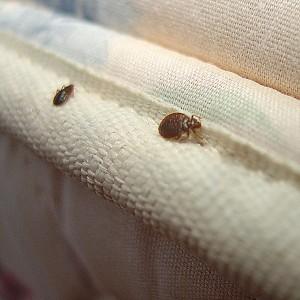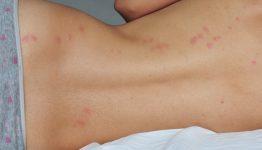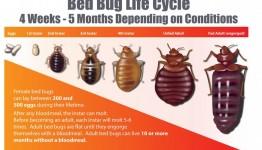 Is there an unexplainable musty odor in your home? Are you finding dark spots on sheets and furniture? Perhaps you have itchy redness on your skin. These are signs that bed bugs may be present. Proving you have an infestation is often the first challenge in dealing with the problem. The insects are small and hide easily but there are several steps to take in identifying the problem.
Is there an unexplainable musty odor in your home? Are you finding dark spots on sheets and furniture? Perhaps you have itchy redness on your skin. These are signs that bed bugs may be present. Proving you have an infestation is often the first challenge in dealing with the problem. The insects are small and hide easily but there are several steps to take in identifying the problem.
Beginning Your Bed Bug Search
The EPA has a good resource on the signs of bed bugs. To get started, you need a few tools at your disposal. These insects are naturally great at hiding, so you’ll need a flashlight. This helps with peeking into tight, dark areas and spot them before they scurry away. A magnifying glass helps see if there are bed bugs or their tiny shells, eggs, or droppings.
If you’re concerned about cleanliness, gloves or a plastic bag can be used so you don’t touch anything contaminated. Bed bugs can’t transmit disease but the thought of touching them or their leftovers is quite unnerving to most. Other useful items include:
- Vial or Pill Bottle. This these you can obtain specimens and have them analyzed to confirm what they are. A ziplock bag works as well.
- Tweezers/Tape: Used to grab the bugs, these help you remove them or collect specimens.
- Paper/Credit Card: Swiping the bugs out of cracks, seams, and crevices is easier this way.
- Vacuum Cleaner: It’s easier just to suck up large numbers of bed bugs. Just be sure to remove and seal the bag immediately after, and throw it out.
- Trash Bags: Any infested belongings including toys, linens, and more should be thrown in bags and sealed up with tape, unless they can be cleaned in hot water or a high temperature dryer.
Where to Look
Direct evidence of bed bugs, meaning you see them crawling about, often requires a diligent search. They can pretty much hide anywhere. Despite their name, these insects don’t limit their options to bed frames, mattresses, and sheets. They might be in the box spring. You might also see bugs seeking refuge in the seams of couches and chairs, or between the cushions.
The culprits might even be hiding within curtain folds. Check anywhere where wall paper has come loose, or in ceiling corners. If you are suspicious, check any location you can think of. Bed bugs have been known to hide in electrical appliances and even in the heads of screws. They’re only about as wide as a credit card. Finding a hiding spot is quite easy.
The laundry, corners of drawers, and in baseboards are great hiding spots too. Your strategy is just as important as where you look. By being systematic, you can be most thorough and find hidden problems before they get worse.
Signs of Bed Bugs
Aside from living, crawling bed bugs, there are several trademark signs of an infestation. You’ll find these when cleaning, changing the sheets, or looking carefully in a motel room when you’re away.
Even though flat and packed with a hard exoskeleton, bed bugs are easily crushed. Heavy mattresses and cushions do them in when you lie down or sit. This results in the rusty or reddish staining that’s often seen during infestations.
Excrement looks like tiny dark spots. Bed bugs go wherever they need to. This leaves telltale signs of their presence. The dark spots can also bleed into the fabric so may look smeared like they were made with a marker. Other giveaways include the presence of shed shells, eggs, and immature nymphs.
Identification: Know How to Find Bed Bugs
Of course, knowing you have them is dead simple if you see a bed bug. They tend to be brown, but become red and plump after a recent meal. The ¼ inch long insect is wingless and has six legs, in contrast to a tick or mite that has eight legs. Its antenna are half as long as the body. Bed bug eggs and nymphs are about 1/16 inches long.
If you know what they look like, the common signs, and check thoroughly, then you will know how to find bed bugs and start dealing with the problem.
If you really want to get rid of bed bugs today try SayByeBugs! It was developed as a safe and highly effective alternative among a sea of products that rarely deliver on their promises.









Ultimate Guide for a Bed-Bug-Free Life - Bed Bug Guide
[…] area along the head of the bed and behind the headboards as well. If needed, move the bed. Refer to this link on how to perform a bed bug […]